By Nahla Bendefaa
As I was preparing to come to Ghana, I was most excited and apprehensive about the food. Despite being African, I had never been south of the Sahara. Most of my ventures into Sub-Saharan African food were Ethiopian or Senegalese and often happened within the confines of a restaurant in Morocco or the United States. As such, I never knew what exactly to expect or how close to the “real thing” the food I had tried was. What I did know was that I had never had Ghanaian food. So, in preparation, I threw myself into numerous food guides and travel shows. Of course, the 2007 No Reservations Ghana episode was on the list. While I have yet to try all the foods I came across during my research, and jollof has become a staple in my Ghanaian diet, these are some of the standouts for me.
Breakfast
As a “pastries for breakfast” person, breakfast in Ghana has been an adjustment. We stayed in a couple of hotels during our first week in Ghana. In both, whether in Accra or Cape Coast, the breakfast spread included a plethora of savory options: fried and hard-boiled eggs, plain rice, sauteed vegetables, chicken gizzards, chicken sausage, and fresh-cut fruit. While bread and jam were always an option, I still tried to go for the savory options. That said, my brain still couldn’t wrap itself around gizzards as breakfast food.

Fufu
If you ask any Ghanaian what food one should try while visiting, the answer will likely be fufu. It is a pounded mixture of cassava and plantain often served with a soup containing chicken or goat. Fufu can be served with different soups all with a distinct flavor profile and texture. I asked multiple Uber drivers, servers, and colleagues what the best soup for a first try would be, all but one said light soup, a tomato-based soup that is slightly spicy. For my birthday, my colleagues treated me to fufu for the first time, with a mixture of chicken and goat. It was interesting to think about how fufu was merely the vessel for the soup as it is fairly neutral in flavor. If there was one piece of advice I had to share about trying fufu for the first time, it’s “Don’t chew!” as I heard that half a dozen times at lunch.
Red Red or Gobe
One of the most common lunch dishes is Red Red, also known as Gobe. It is stewed black-eyed peas that are finished with palm oil, hence the name, and served with fried plantains and garri (cassava flakes). As a fried plantain enthusiast, I knew I was going to like this dish before I even tried it. The richness of the palm oil flavor was unique and reminded me of Argan oil in how it coats the tongue. In Moroccan cuisine, most meals are served with bread, I feel that is the role rice plays in Ghanaian cuisine. However, Red Red is one of the few Ghanaian dishes that I felt could benefit greatly from some crusty bread on the side.
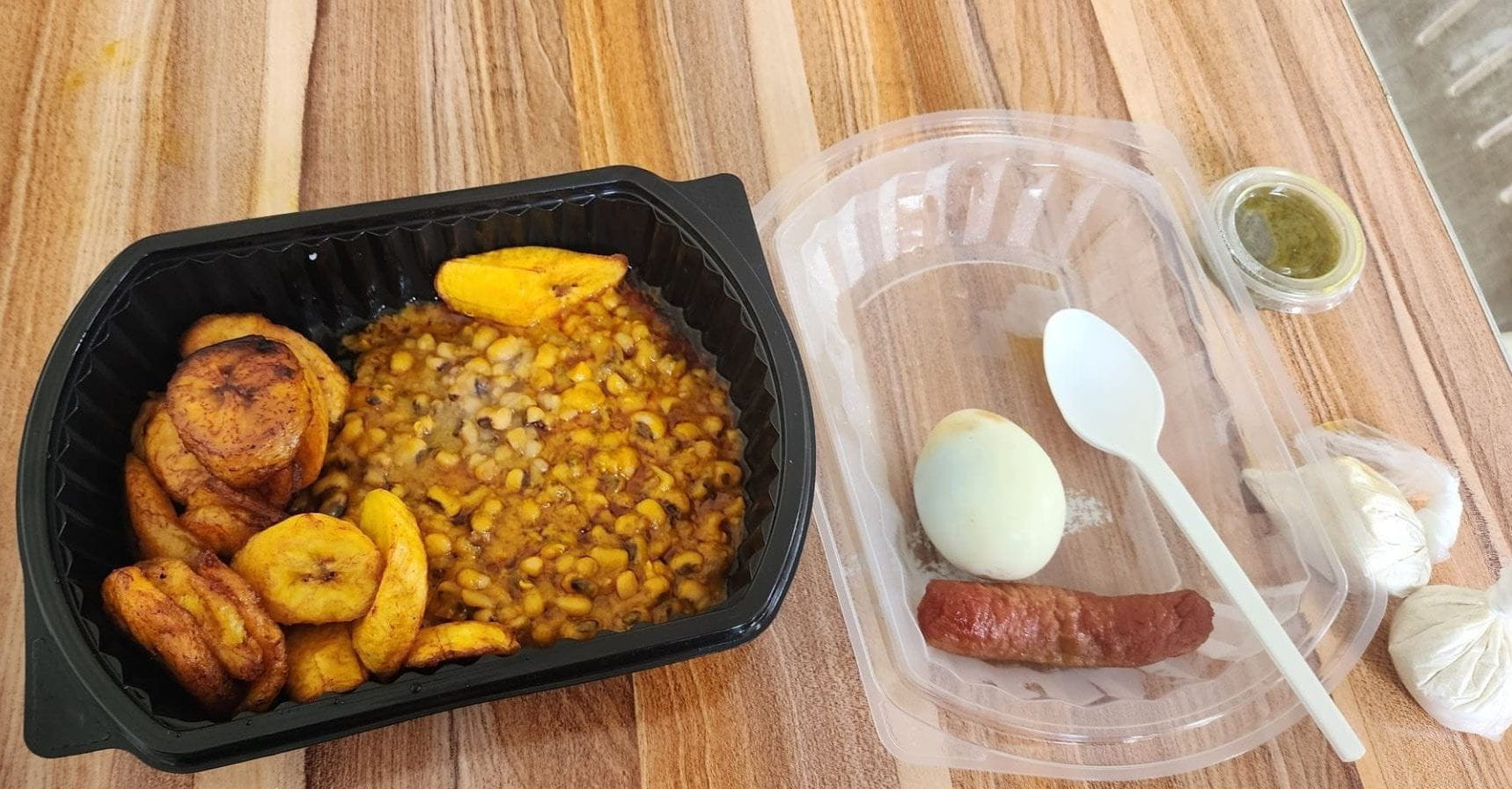
Kenkey
I tried kenkey during the first week of my internship. To celebrate his birthday, one of my colleagues provided a kenkey lunch for the whole office. Kenkey is a maize dough that is fermented and then wrapped in plantain leaves or corn husks before being steamed. It is often served with a tomato sauce containing tinned fish such as sardines, as well as peppers, onions, shitto, and fried fish. For our kenkey lunch, chicken and sausage skewers were also available. Eating kenkey is the perfect opportunity to engage in the communal eating practices that are common throughout most of the African continent. While I could not partake in the communal eating aspect due to a food allergy, it was still exciting to be in the presence of my colleagues and witness the excitement with which they shared a meal on a slow Friday afternoon.
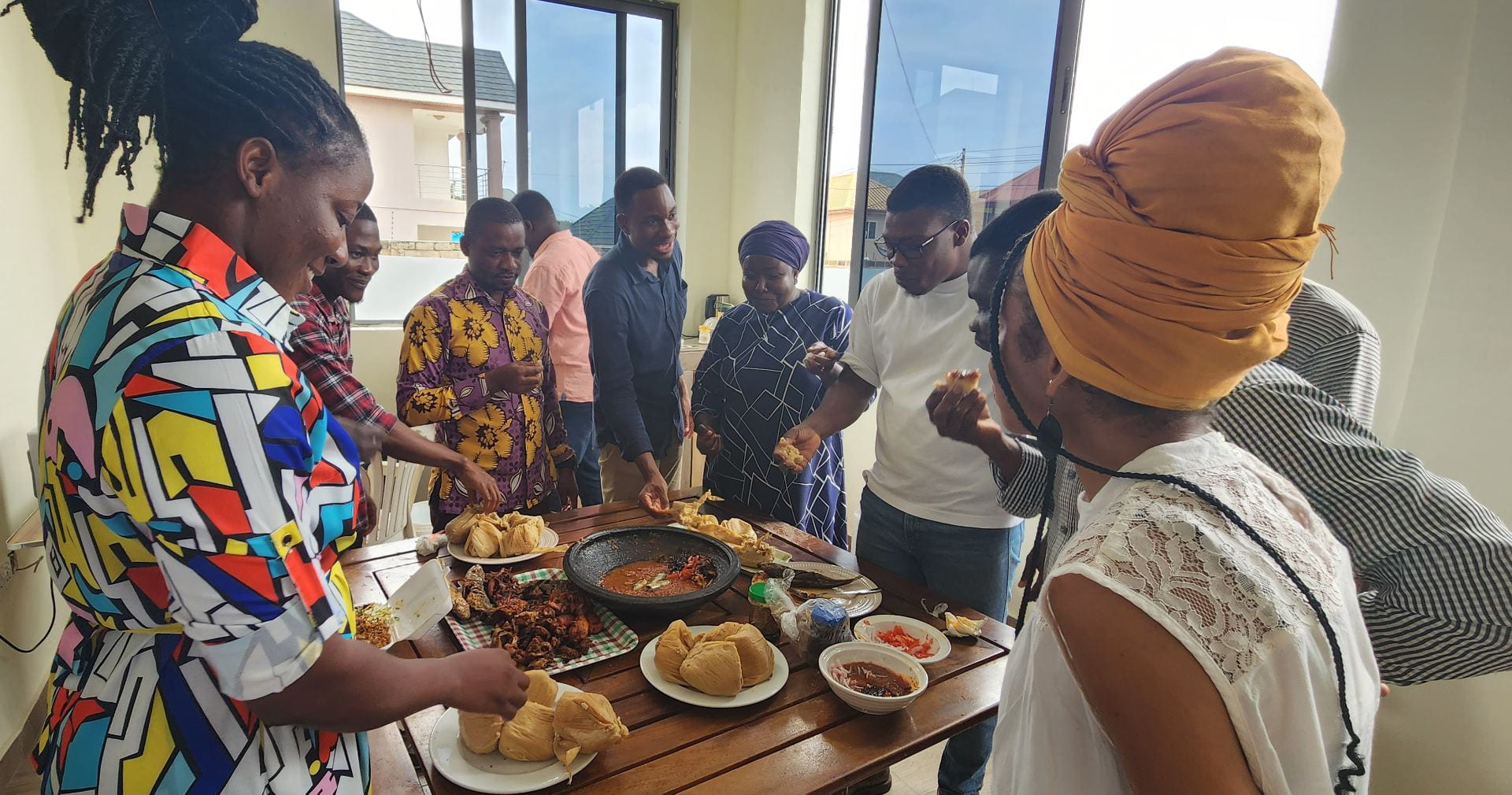
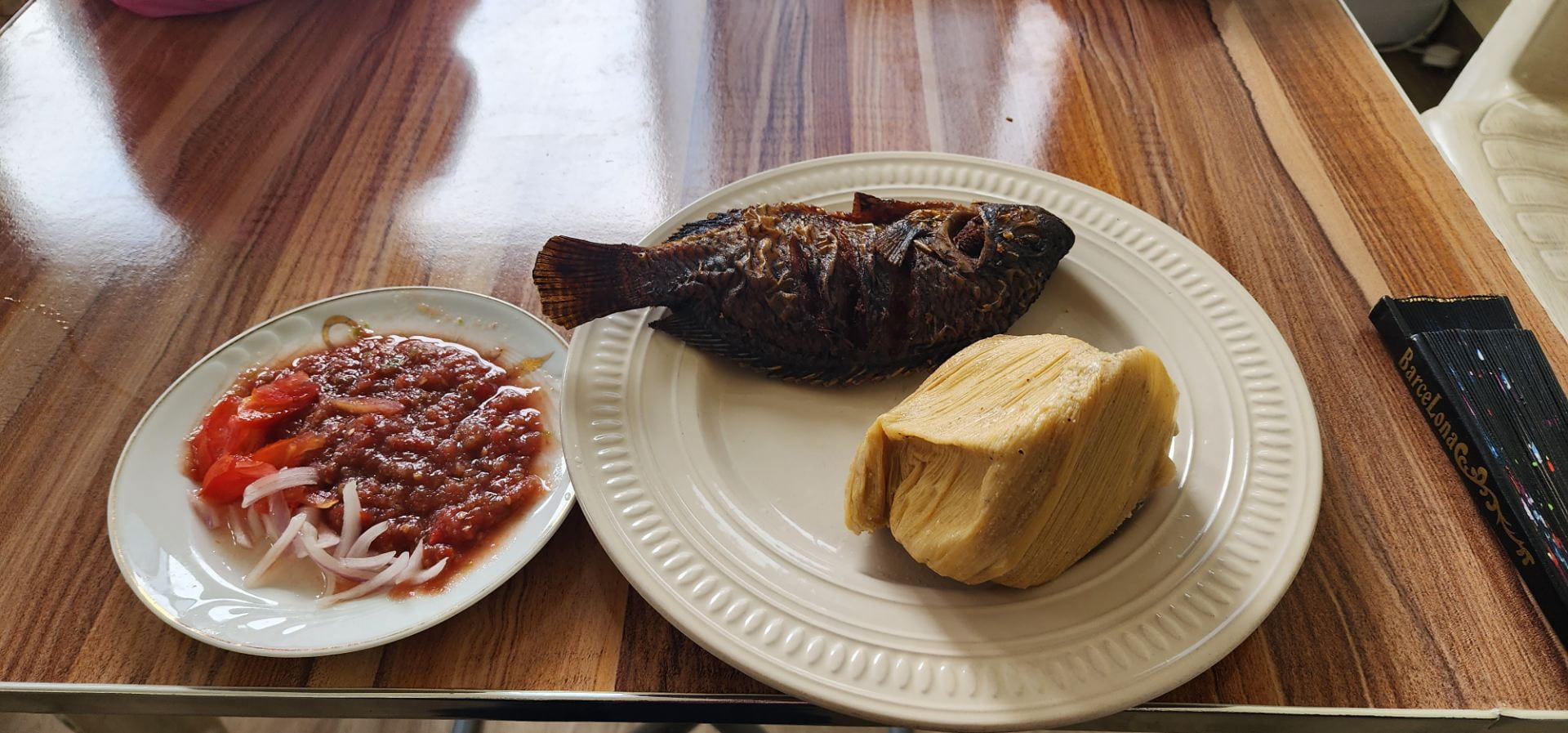
Bofrot
As mentioned above, the lack of breakfast pastries in Ghanaian breakfast was a challenge for me at first. However, I soon came to learn about the existence of Bofrot. It is a deep-fried dough ball similar to donuts or beignets. In true Ghanaian fashion, it is not very sweet, but it still makes for the perfect morning treat alongside my tea. You can often buy it from street stands or walking vendors selling their products at stoplights.
Fresh Fruit
When asked about what kind of desserts are popular in Ghana, Dr. Felix Deku exclaimed “FRUIT is dessert in Ghana!” That has rung true in most of the Ghanaian food experiences I have had so far. Most prominent is the abundance of fruit stands across the city. Anywhere you go you will find vendors selling mangoes, pineapples, and avocados on the side of the road. During our trips outside of Accra, we have also stopped at coconut stands for fresh coconut water. There is something about consuming tropical fruit right where it grows that is unparalleled. Every bite of mango I had from a fruit stand has been an explosion of flavor and juices that I had never experienced before. I fear I will never see or enjoy the mangoes in Oregonian grocery stores in the same way.
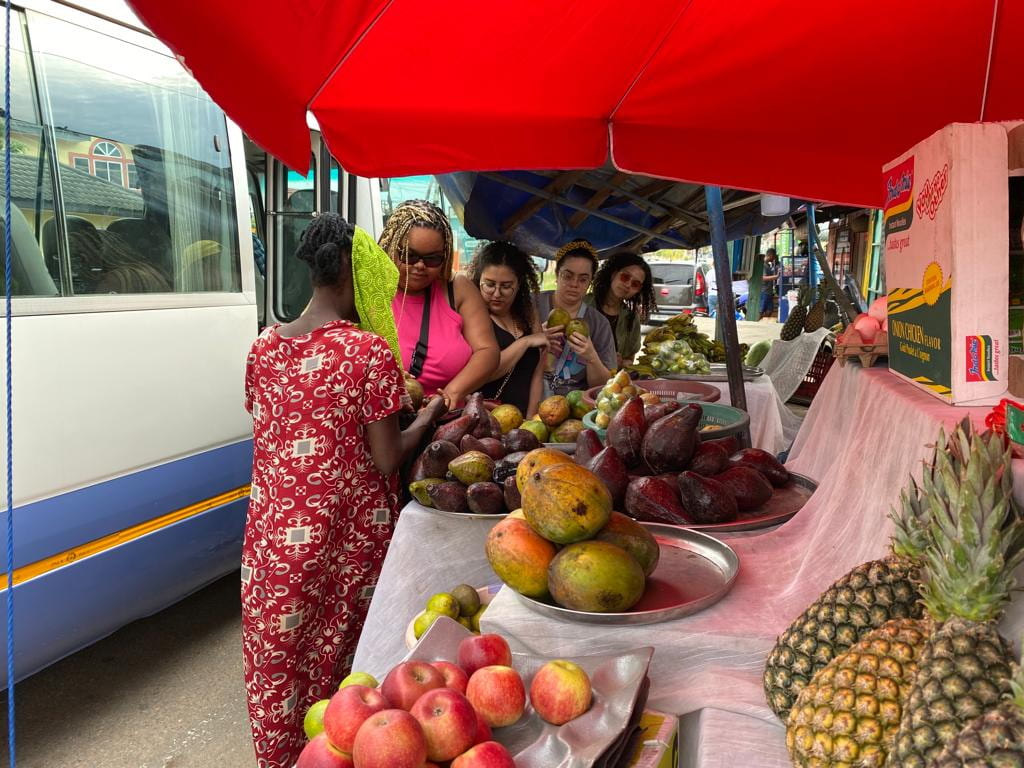
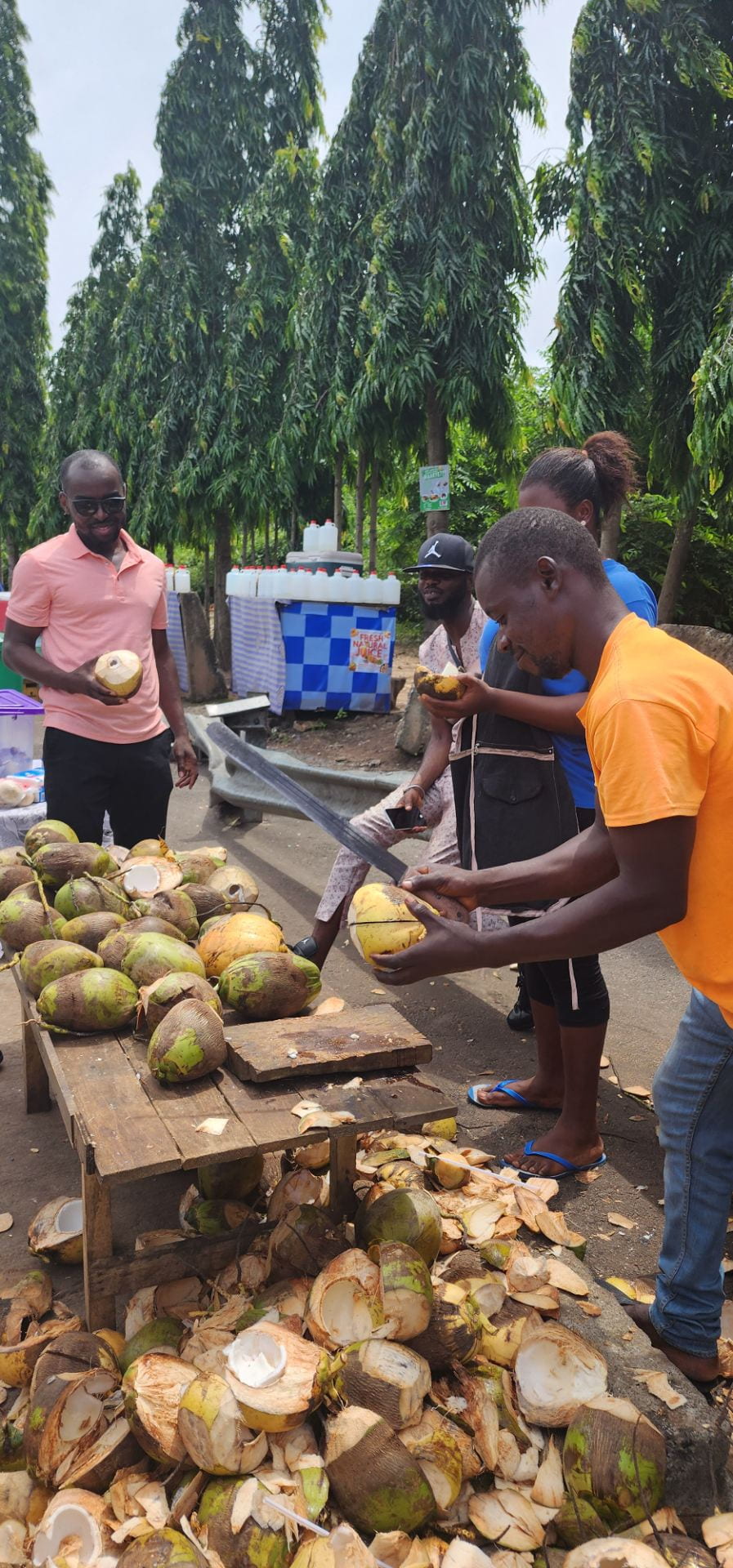
I loved reading about your food experience and could relate to a lot of what you said. I will miss the mangoes here so much when I go back. It’s really too bad we can’t take some home.